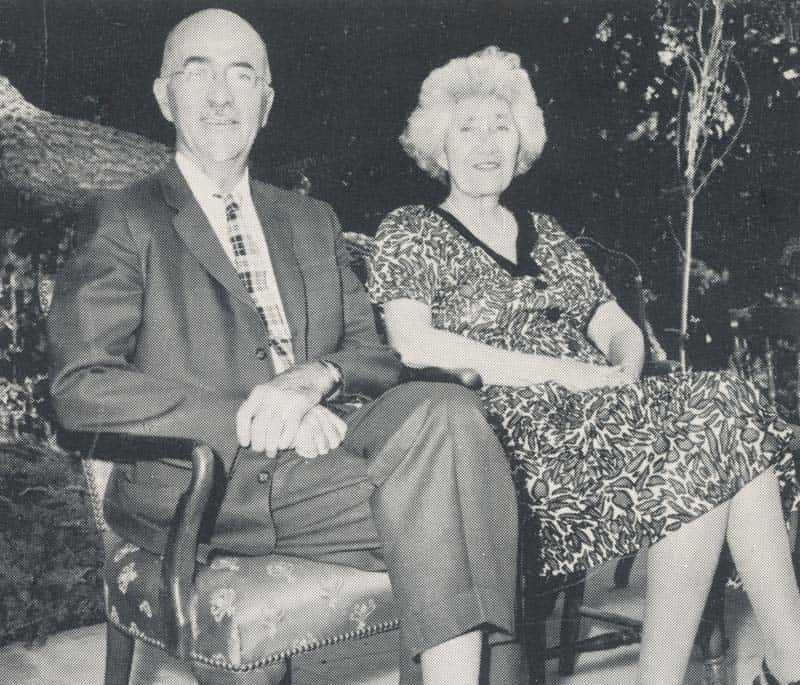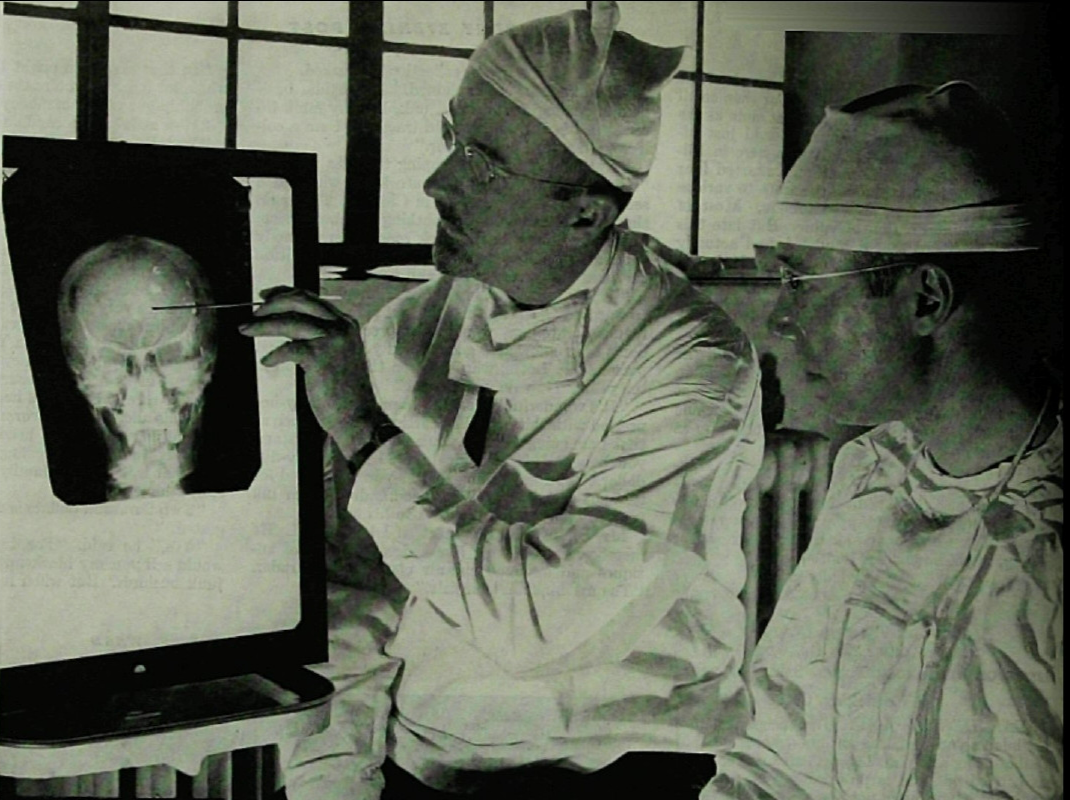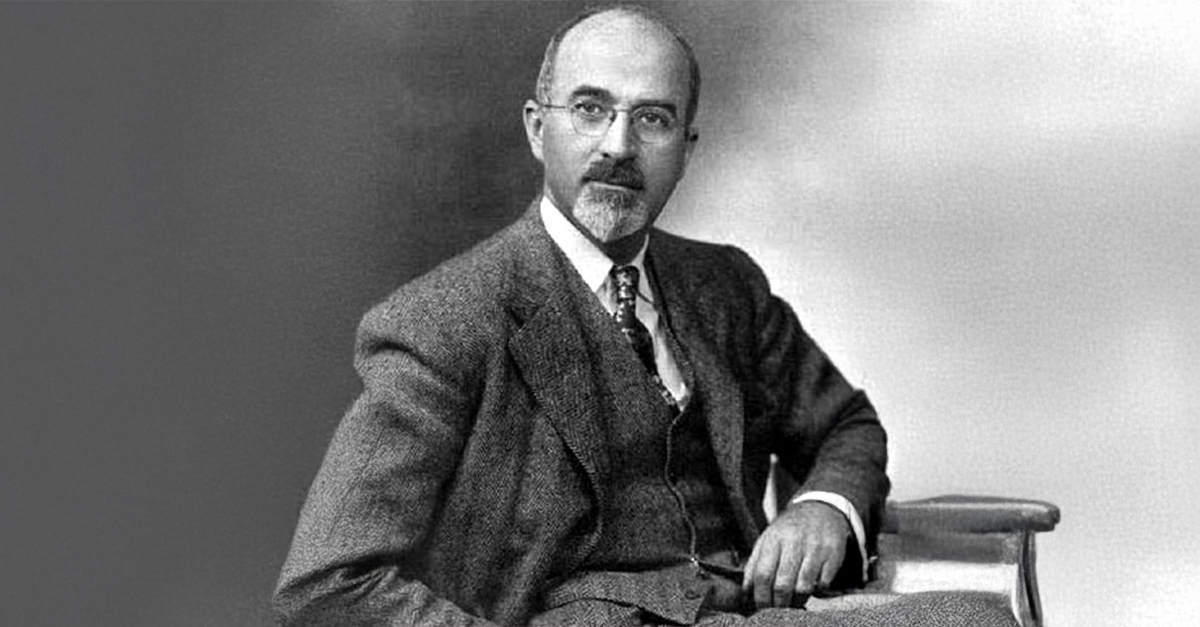In the early 20th century we had very little understanding of mental illness and how to treat it. Into this knowledge vacuum stepped Walter Freeman, a charismatic American neurologist with a bold solution—the frontal lobotomy. Freeman didn’t invent the procedure, but he made it into a mainstream psychiatric tool. For years, he was hailed as a pioneer. But his relentless ambition and carelessness left patients dead or permanently damaged.
Inspired By A Radical Idea
Freeman was introduced to the concept of lobotomy through the work of Portuguese neurologist Egas Moniz, who in 1935 experimented with severing connections in the brain’s frontal lobes to treat mental disorders. Fascinated by the potential to "cure" patients deemed untreatable, Freeman became determined to bring this radical procedure to America—and improve it.
 Flickr, Stanford Medical History Center
Flickr, Stanford Medical History Center
The Birth Of The American Lobotomy
In 1936, Freeman performed the first lobotomy in the United States alongside neurosurgeon James Watts. The early method was invasive, requiring drilling into the skull. But reports of calmer, more manageable patients quickly spread, and Freeman began promoting the lobotomy as a miracle cure for everything from schizophrenia to depression and anxiety.
Turning Surgery Into A Quick Fix
Never one to settle, Freeman developed a faster, simpler version called the transorbital lobotomy. Using a tool resembling an ice pick, he accessed the brain through the eye socket, severing neural connections with a few taps of a mallet. This technique could be performed in minutes, without anesthesia, making it accessible to overcrowded asylums desperate for solutions.
A Showman More Than A Scientist
Freeman wasn’t just a doctor—he was a showman. He traveled across the country in his "lobotomobile," performing demonstrations and convincing institutions to adopt his method. By framing the lobotomy as a humane alternative to being warehoused for life in an institution, Freeman turned it into a mainstream psychiatric tool by the 1940s.
 Article text Waldemar Kaempffert; Photography Harris A Ewing, Wikimedia Commons
Article text Waldemar Kaempffert; Photography Harris A Ewing, Wikimedia Commons
The Numbers Skyrocketed
At the peak of the lobotomy craze, thousands of patients were subjected to the procedure. Freeman himself performed over 3,500 lobotomies, sometimes operating on dozens of patients in a single day. The procedure was used not only on severely ill patients but also on individuals with minor mental health issues, behavioral problems, or even rebellious children.
Overlooking The Devastating Consequences
While some patients did appear calmer after surgery, many were left with severe side effects—loss of personality, cognitive impairment, incontinence, or emotional flatness. Freeman dismissed these outcomes as acceptable trade-offs. Critics in the medical community grew increasingly alarmed at how casually he wielded his "cure."
The Tragic Case Of Rosemary Kennedy
One of Freeman’s most infamous operations was on Rosemary Kennedy, sister of future President John F Kennedy. In 1941, at the age of 23, Rosemary was subjected to a lobotomy to address mood swings and mild developmental delays. The procedure left her severely disabled for life, a stark example of Freeman’s reckless approach.
 Angus McBean, Wikimedia Commons
Angus McBean, Wikimedia Commons
A Decline As Medicine Advanced
By the 1950s, the introduction of antipsychotic medications like Thorazine offered less invasive treatments for mental illness. The medical community began to turn against lobotomy, viewing it as crude and dangerous. Freeman, however, remained committed to his method, refusing to acknowledge the mounting evidence of harm.
The Final, Fatal Mistake
In 1967, Freeman performed his last lobotomy. After operating on a long-time patient for the third time, she perished from a brain hemorrhage. This was the final straw. Freeman was banned from performing surgeries, marking the end of his controversial career. As many as 100 people lost their lives to cerebral hemorrhage thanks to his procedure. Freeman's reputation, once celebrated, was now synonymous with medical overreach and tragedy.

History's most fascinating stories and darkest secrets, delivered to your inbox daily.
A Legacy Of Ambition And Hubris
Walter Freeman’s rise and fall is a cautionary tale of how medical innovation, unchecked by ethics and humility, can lead to disaster. He turned the frontal lobotomy into a widespread practice, driven by a genuine desire to help—but blinded by his belief in a one-size-fits-all solution. Today, Freeman’s legacy serves as a grim reminder of the human cost when ambition overshadows compassion and scientific rigor.
You May Also Like:
Facts About Bizarre Medical Practices
Deranged Facts About Mental Disorders
44 Volatile Facts About Dangerous Science Experiments in History










